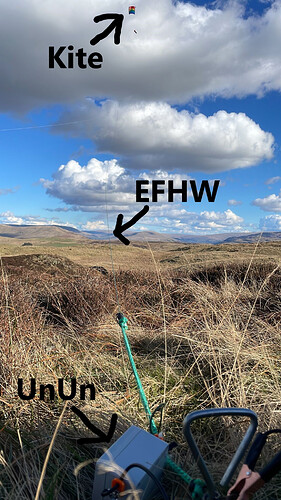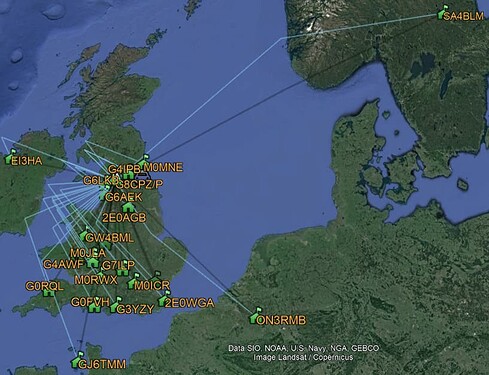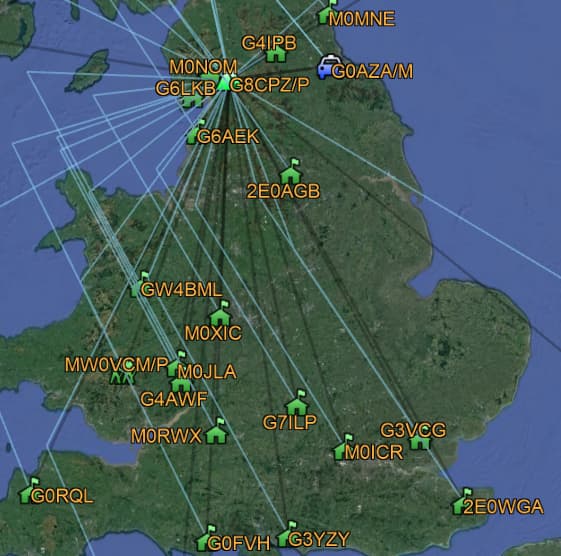My first kite antenna SOTA today – Lambrigg Fell G/LD-046
With very light wind at the base, I was doubtful whether the kite would pull strongly enough to lift the antenna. This time I used two dog-tie screw-in ground stakes about 1m apart, one for the flying cord and the other for the antenna. Once the EFHW was in the air, I slackened the flying cord a bit to let the DX50 antenna wire take the strain in order to keep it as taut as possible.
The wind wasn’t strong enough to keep it completely taut most of the time but – as it turned out – it was more than good enough. The 40m SSB sub-band was very busy and most stations were 5/9 on my FT857, and I had trouble finding a clear frequency.
With 45W SSB via an ATU, once started I had my biggest pileup to-date with as many as 5 chasers calling at once. I worked through 25 callers back-to-back, giving mostly 5/9 or 5/9+ reports and getting mostly 5/9’s. This is much better than when I’ve used EFHWs on my 6m and 8m poles and I assume the height of the EFHW with the kite made all the difference.
(C) Google Earth 2023, ADIF radio paths courtesy M0NOM
Like the trial on my local estuary sands, the antenna wire and flying cord had wrapped around each other at least 20 times, and that took ages to unravel. Next time, I’ll try putting the two ground stakes much further apart.
Zooming in on G/GW
Despite the cold (~4C) it was very sunny and I was comfortable hunkered down in the heather. Yes, a kite antenna takes much more set-up and tear-down time than the usual antennas, but the increased performance was a joy. Not suitable for most SOTA summits but having ‘broken the ice’ I’m looking forward to trying it again, and next time on other bands and including CW.


